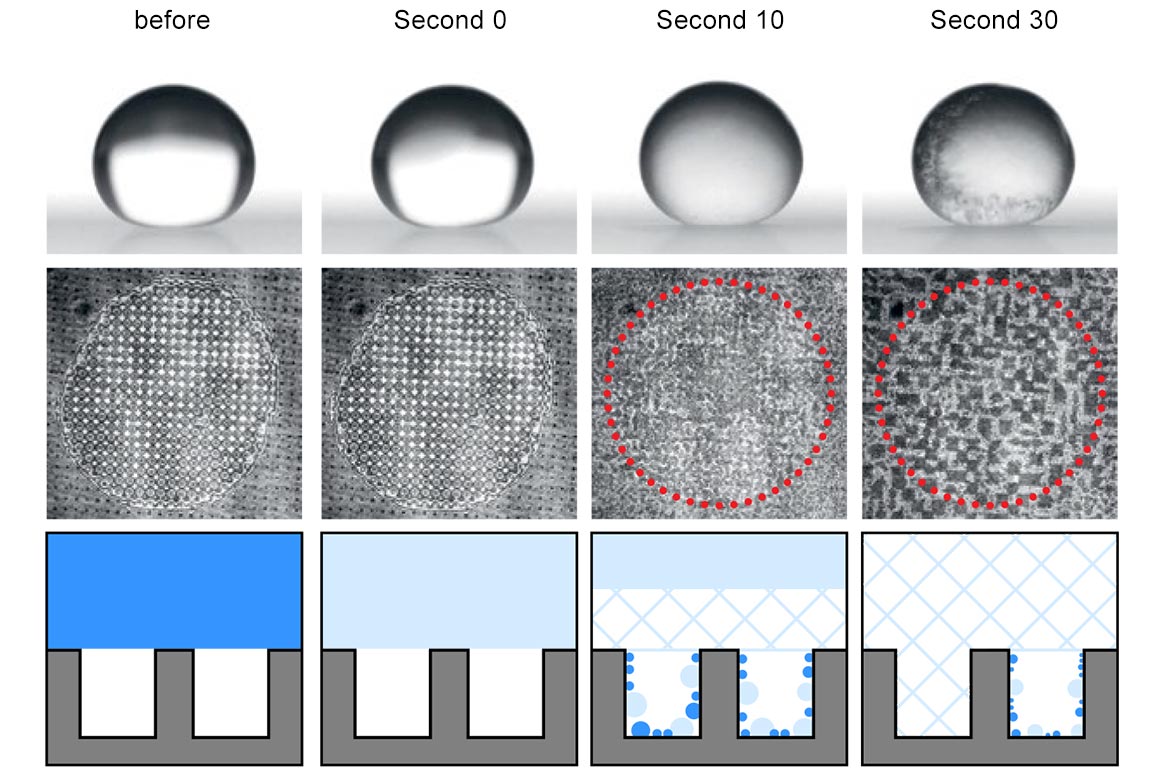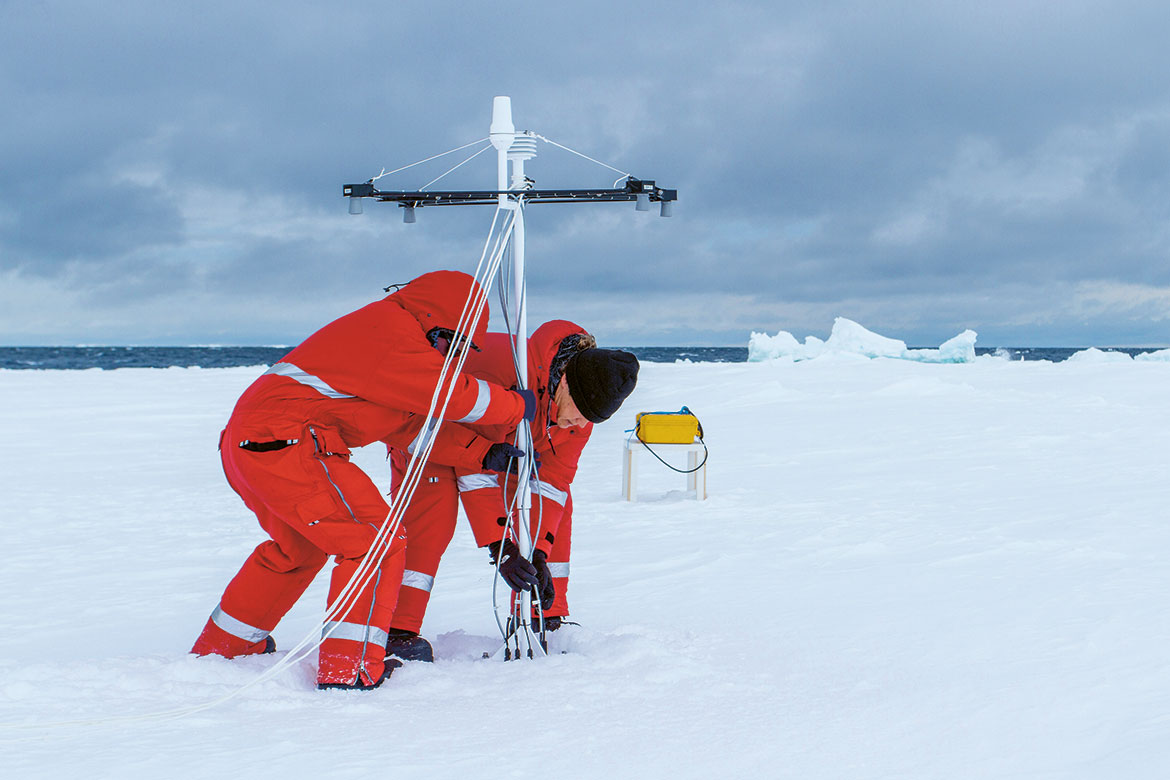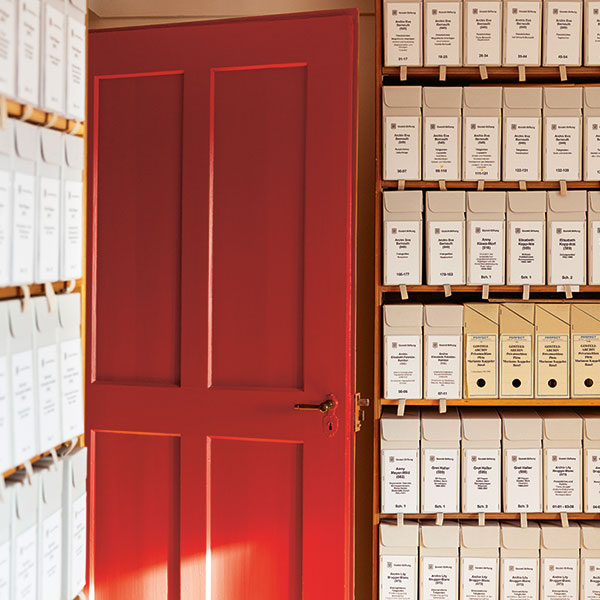IN THE PICTURE
Freezing water drops
Why water-repellent surfaces ice up quickly.

A water droplet in the process of freezing (top row, left to right); it sticks to the contact point (middle row). The diagram in the bottom row shows a cross-section of what happens in the indentations of the contact point. | Image: zVg
Water-repellent surfaces are practical, but they ice up quickly. ETH researchers have been investigating why. When a water droplet freezes (top row), it generates a little heat, which in turn causes an icy sludge to form at the point of contact with the material (middle row, showing the droplets from below). This sludge then penetrates indentations in the surface (the blue circles, bottom row) and freezes from the bottom up (blue shaded sections). This makes the ice droplet stick to the surface.




